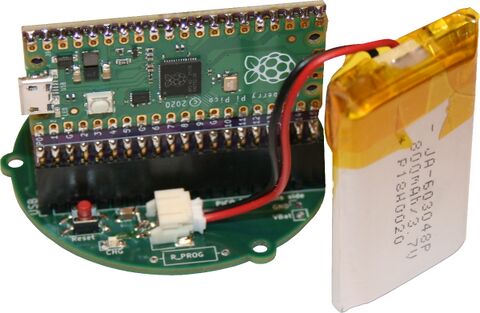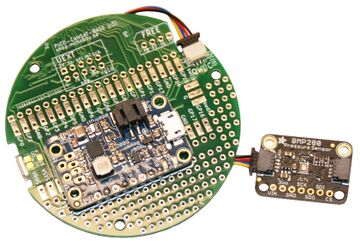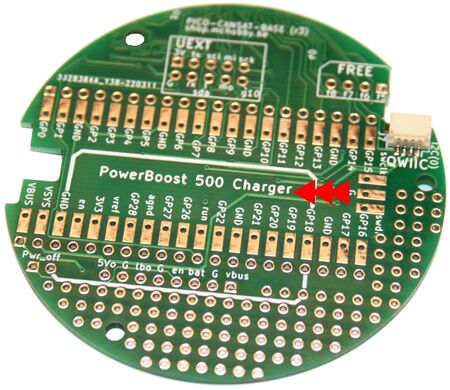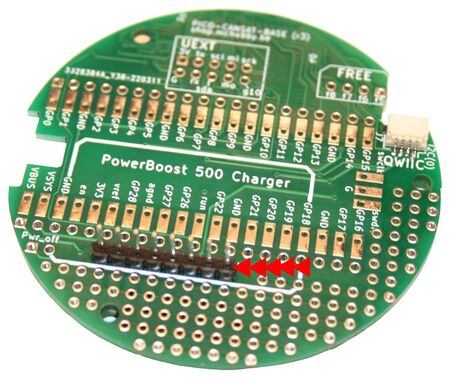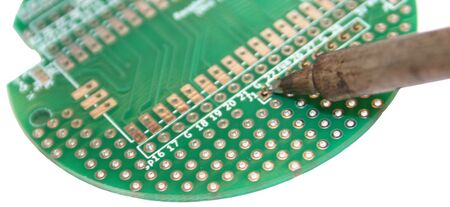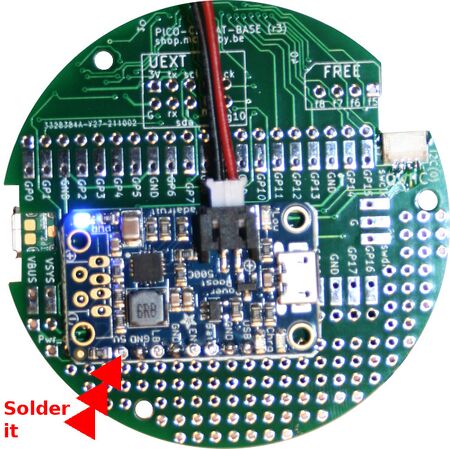ENG-CANSAT-V2-ASSEMBLY
Révision datée du 29 juillet 2025 à 20:46 par Admin (discussion | contributions) (→Assembling the Cansat)
Abstract
The original version of the CANSAT kit required many soldering operation. It's intimidating for newcomers with little experience with a soldering iron.
With the CANSAT V2 kit, things have been made easier than ever, no solder required!
Assembling the Cansat
Let's prepare the main CANSAT board.
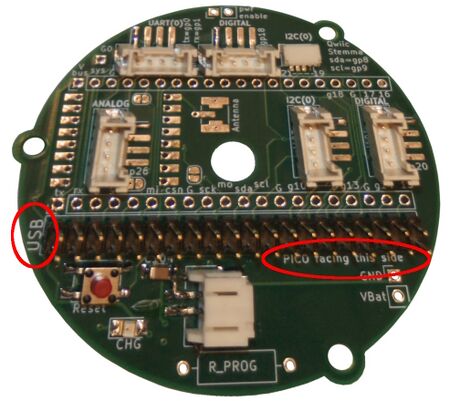
|
Take the base board and orient the board to see the USB label on the left and the "Pico/MCU facin this side" in front of you. | ||
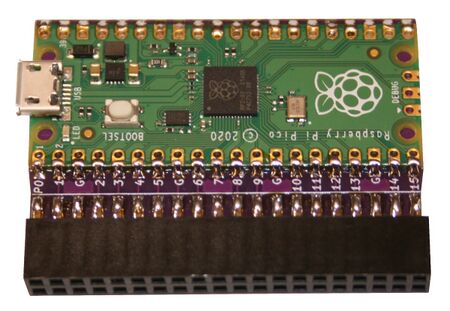
|
Grab the CPU board with the microcontroler facing front. | ||

|
Now, insert the MCU board onto the 2x20 pin connector. | ||
| 450px | Even when not required yet, user can pick the Lipo battery then plug it into the 2 poles JST connector (facing the microcontroler).
| ||
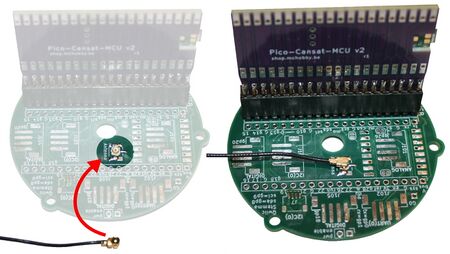
|
When required, plug the µFl antenna coax.
|
Lipo Booster soldering
The kit can be used either with a PowerBoost 500 Charger, either a PowerBoost 1000 Charger.
The soldering operation depends on the selected PowerBoost model.
PowerBoost 500 Charger Soldering
The PowerBoost 500 is the default powering system of this kit.
| The instructions doesn't applies to the PowerBoost 1000 charger. |
Let's solder it
Written by Meurisse D. for MCHobby
